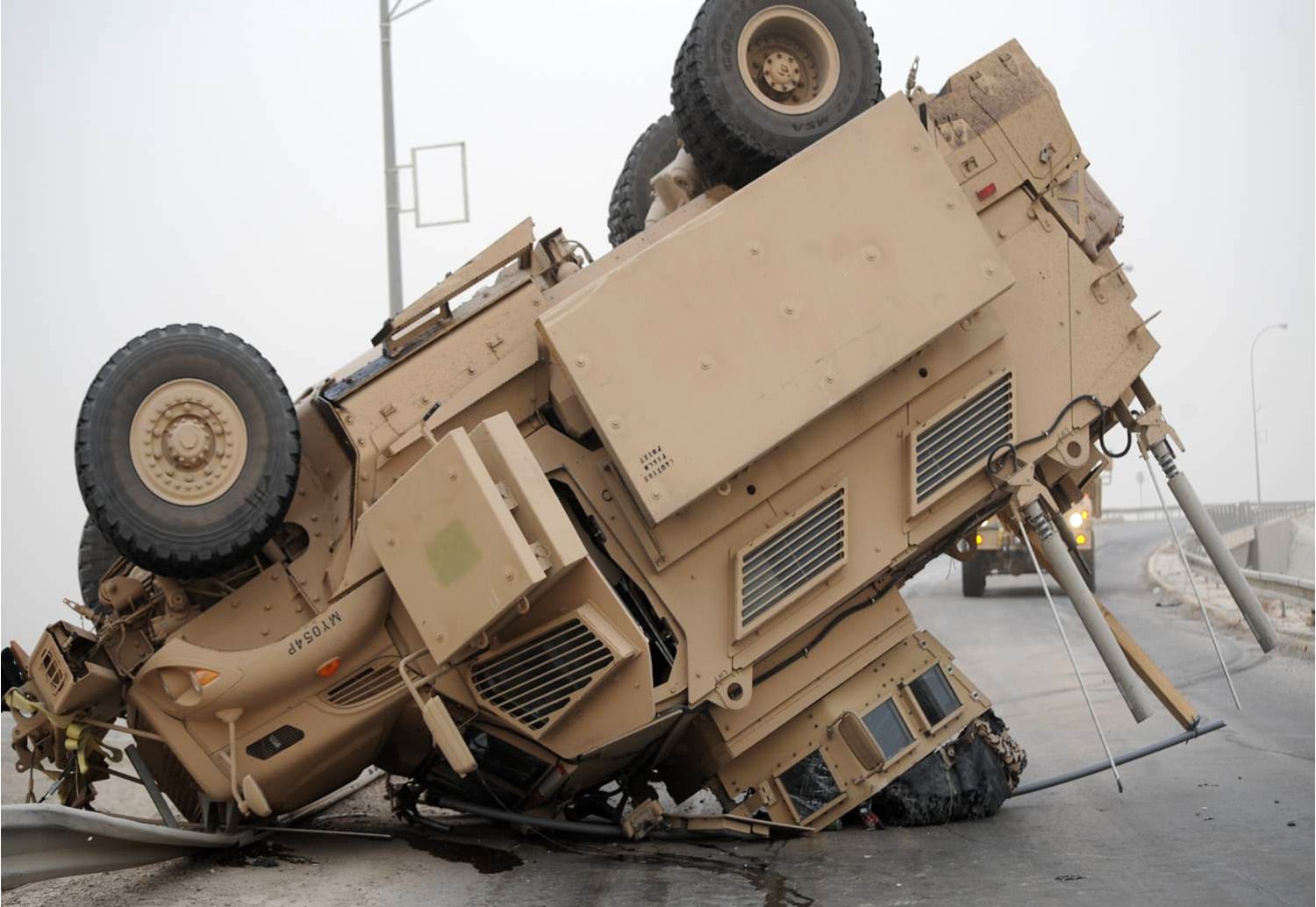Army officials publicly identified the soldier who died in a Monday afternoon Humvee wreck on a busy road that bisects Fort Bragg, North Carolina. Four other soldiers were injured in the incident.
Pfc. Patrick J. Hernandez was 30 years old and had just joined the Army in August 2020, according to a press release from the 18th Airborne Corps, one of the largest headquarters on Fort Bragg. He was assigned to the 108th Military Police Company, 503rd Military Police Battalion, 16th Military Police Brigade.
It was not immediately clear how and why the crash occurred on Butner Road, one of the post’s key arteries. The Army’s Combat Readiness Center has dispatched a safety team to investigate the accident, which is standard practice for crashes that leave soldiers dead or disabled.
Two of the four injured soldiers remain in the hospital, according to Capt. Perianne Duffy, an 18th Airborne Corps spokesperson. The others were treated and released.
Hernandez’s commander and colleagues remembered him as a soldier wise beyond his rank, eager to impart his life experience that he brought when he enlisted last year.
“The last few days have been extremely hard for the Enforcer family, especially the 108th MP CO”, said Lt. Col. Andrew Till, the deceased’s battalion commander. “Unfortunately, we lost one of our own in a vehicle accident on post. Our thoughts and prayers go out to Pfc. Hernandez’s family as they grieve the loss of their loved one. The 503rd MP Battalion is grieving as well, and we will honor Pfc. Hernandez’s life and service.”
“Pfc. Hernandez taught me so much in such a short time, and he was always willing to provide advice on fatherhood when he discovered I was soon to become a father,” said Pfc Michael Sanders. “He was always available to mentor me and give guidance from his past experiences. I am heartbroken I had such a short time to know such a great individual and a great father.”
Accidents are a continuing crisis
Hernandez is the second soldier to die in a military vehicle accident in recent months on the North Carolina installation. Cpl. Mohave Littlejohn, a horizontal construction engineer, died June 17 when his truck slammed into the back of a military excavator on a gravel road.
The Army claims it has implemented the changes to driver training that were recommended in a July report from the Government Accountability Office. The GAO probed thousands of non-combat tactical incidents since 2010.
RELATED

The Army’s model of training soldiers to drive tactical vehicles at the small unit level differed from “how the Army conducts other types of military training” because it didn’t have any “performance criteria and measurable standards” to train drivers beyond an initial road test, the GAO stated.
That lack of measurable standards leaves the training programs “vulnerable to competing with other unit priorities,” GAO officials argue in the report. “We continue to believe that by developing performance criteria and measurable standards for driver training, the Army would better ensure that its drivers have the skills that are needed to operate vehicles safely and effectively under diverse driving conditions.”
When reached by Army Times earlier this year to check on its implementation of the GAO’s recommendations, Army officials argued that the training program itself already fulfilled the recommendation, but that it just needed better mid-level oversight.
“The US Army Transportation School Army Drivers Standardization Office (ADSO) has and continues to be deeply involved in the regulatory processes and in the training of operator licensing programs,” a statement from the school reads. “In 2016, the school started the revision of Army Regulation 600-55 to incorporate Master Driver Trainer Qualification training which standardized training of all Master Driver Managers at the brigade and battalion level.”
“In October 2019, the current version was approved and released which included multiple updates to include the addition that Master Drivers have the primary responsibility to ensure that all three phases of the training and licensing programs are executed in accordance with AR 600-55,” the school said. “The very same regulation mandates annual sustainment training in order to maintain a high level of driver skill proficiency and prevent drivers from acquiring poor driving habits.”
But the Army has still not made any changes to the “performance criteria and measurable standards” required of soldiers going through the drivers training program beyond the initial road test, as the GAO had recommended.
Davis Winkie covers the Army for Military Times. He studied history at Vanderbilt and UNC-Chapel Hill, and served five years in the Army Guard. His investigations earned the Society of Professional Journalists' 2023 Sunshine Award and consecutive Military Reporters and Editors honors, among others. Davis was also a 2022 Livingston Awards finalist.




